Comprehensive urban and spatial planning for a balanced and sustainable Bangladesh
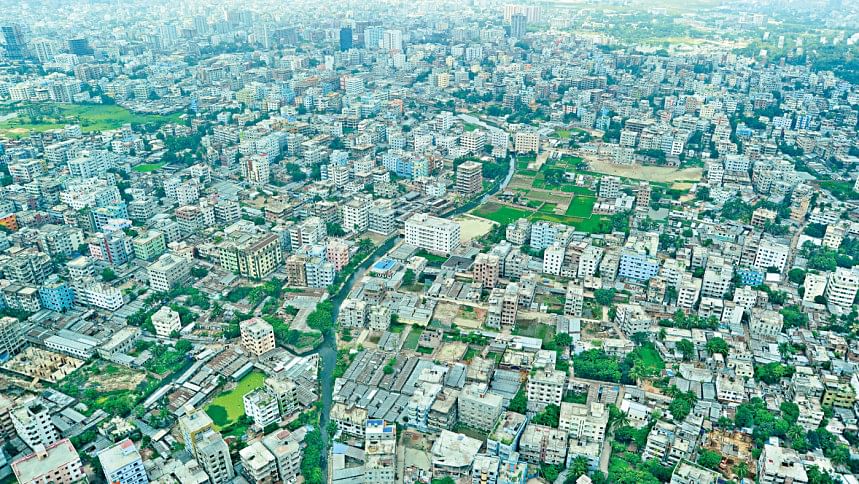
Bangladesh has celebrated its fifty years of independence in recent years with immense joy, and expectations. However, at the same time, we have to ponder what more should we be aiming to achieve in this journey. We are in the broadway of graduating from LDC to a middle-income country and hence, we are at the crossroads of development where we have success in attaining sustained economic growth. Urbanization has been a major driver behind the gradual economic growth of our country. However, the pattern of urbanization and urban growth has been mostly organic, unplanned, uncontrolled as well as demand-driven, having limited or less control over urban development from Government Authorities. Therefore, urban development, which is called the engine of economic growth, has flourished here at the cost of environment, social equity, and justice. Against this backdrop, we should reassess and rethink the strategies, techniques, and processes of spatial planning and urban development to guide it in a way to make urbanization sustainable, equitable, and inclusive for Bangladesh.
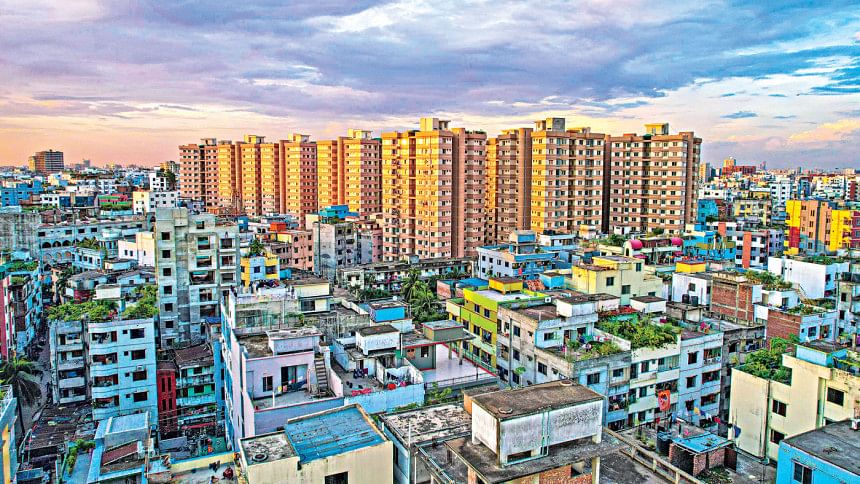
Visioning Planned and Balanced Urban Development across Bangladesh
The urban population of Bangladesh increased from 9% in 1974 to 40.5% in 2023 growing at an average annual rate of 3.13%. The concentration of our urban population is predominantly centered around Dhaka, with only Chittagong City showing some degree of comparability in terms of employment opportunities, urban facilities, and amenities, while other divisional cities lag behind.
Our urban growth and economic activities are agglomerated in some major urban areas - namely Dhaka, Chittagong, Gazipur, and Naryanganj. Therefore, the transformation of Dhaka into a megalopolis has evolved at the expanse of balanced urbanization in Bangladesh. Our divisional cities like Rangpur, Rajshahi, and Barishal lack adequate employment opportunities which could contain the regional migration or climate-vulnerable people.
Khulna city has experienced a decayed population trend in the past, however, economic activities are now on the rise due to some large projects around Khulna.
This is high time to plan for big investments in divisional cities and secondary cities as well as to decentralize development from Dhaka city for balanced urbanization.
Equitable Distribution of Development Budget and Investments across Regions
Balanced urban and spatial development requires proper planning supported by judicious investment as well. However, over the years, Dhaka city has successively received the lion's share of an annual budget of our country. A recent Institute for Planning and Development (IPD) study, unveiled in 2023, reveals that only seven districts receive 50% of the Annual Development Programme (ADP), while just 13% goes to the 25 lowest recipient districts.
In terms of regional considerations, the Greater Dhaka region (old large district) is getting 32% and the Chattogram region is getting 15%. At the district level, Dhaka district is getting 21 percent of the development budget of ADP. As a result, significant differences are being observed in the budget allocation at the district and regional levels of the country which is deterrent for balanced spatial and urban development of the country.
Balanced spatial and urban development should be supported by the distribution of the annual budget and other investments from the Government as well. The government has policy directives to uplift lagging district through appropriate interventions and budgetary allocations, however, significant initiatives have not been observed in this regard to uplift the lagging regions in Bangladesh. It is high time to take appropriate planning, initiatives, and financial allocation towards lagging regions for a balanced spatial development of the country.
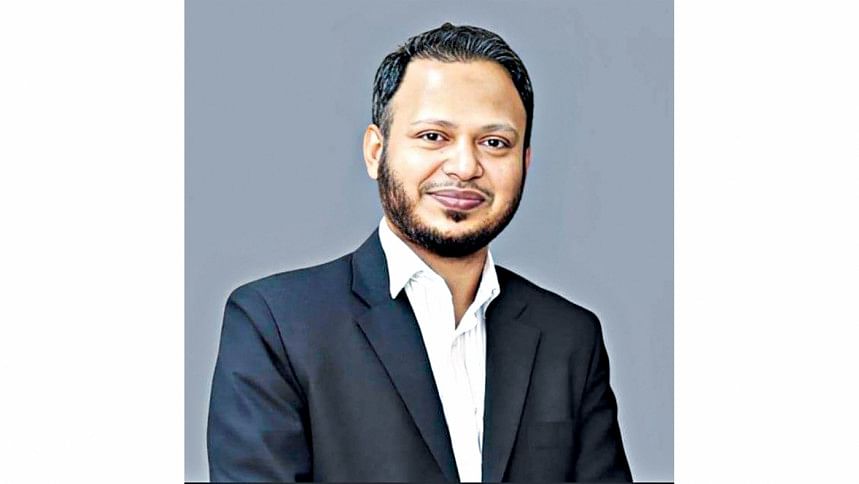
Livability and Environment Challenges in Urban Areas
Our cities are facing tremendous challenges in terms of livability. All sorts of pollution like air pollution, water pollution, soil pollution, and noise pollution are prevalent not only in big cities like Dhaka or Chittagong but also in secondary cities like Gazipur, Habiganj, Noakhali as well. Dhaka city has been persistently ranked among the least livable cities, however, other cities like Gazipur, Naryangonj, Cumilla, and many other secondary cities are lagging far behind in terms of livability yardsticks.
Livability encompasses appropriate quality, quantity and accessibility of housing, transport, health and education, utility, recreation facilities, etc. to attain inclusive cities for all. Urban authorities in Bangladesh should properly plan and invest in affordable and social housing projects to accommodate lower-income people. Land share for low and lower middle income should be increased through provisioning an adequate amount of land for this quarter in physical plans for urban areas. Private and real estate sectors should be encouraged through appropriate policy directives to develop housing units for lower income brackets of society.
The National Housing Policy framed in 2016 suggests a 'National Housing Committee' that has not been formed yet. The government should formulate a Committee without any delay to ensure quality housing for everyone.
Urban and environmental authorities should concentrate on improving the air and water quality of our cities. Cities should have the required balance of 25-30 percent green, 10-15 percent water, and 40-50 percent grey or built-up area. Hence, we should make proper efforts to preserve our existing parks, open spaces, vegetation, and waterbodies; plus a plan to create new green areas or waterbodies. Interconnected blue and green networks will reduce the waterlogging problems of the cities as well. However, it is ironic that waterbodies and open spaces are encroached on or illegally occupied by socially or politically-powered people. Government authorities, nowadays practice very limited power or authority to stand against these illegal encroachments. Therefore, without strong political will, supported by proper engagement of local communities, these conservation areas or public spaces could not be retained for urban people and the urban environment.
Inclusive Planning for Urban Neighborhoods
Parks, playgrounds and open spaces are very important recreational facilities for sustainable urban living. The number of population is increasing in urban areas whereas access to recreational facilities is declining in the city areas in Bangladesh. IPD research in 2023 reveals that there is a shortage of 795 playgrounds in Dhaka, the densely populated capital, while Chattogram lacks 541, to meet the urban planning standard. Moreover, number of playground shortages is 37 in Rajshahi, 65 in Khulna, 40 in Sylhet, and 45 in Barisal, according to this study.
Different types of playgrounds should be planned for different age groups in urban areas. In densely populated urban areas, one playground is needed for every 3,000-5000 individuals under three age group categories – playlot for children (3-6 years, 0.5 acres), playground for teenagers (7-15 years; 1.5- 3 acres) and playfield for adults (above 15 years, 5 acres), according to planning criteria.
Significant differences are being observed in the budget allocation at the district and regional levels of the country which is deterrent for balanced spatial and urban development of the country.
No significant initiative has been observed so far to plan three types of playgrounds for children and adolescents in the urban areas in Bangladesh, depriving children and youth of sports activities and subsequently hindering their physical, mental, and social development. Additionally, three types of parks should be planned in urban areas – neighborhood parks, community parks, and urban or city parks which are mostly absent in the urban planning practices in Bangladesh.
Only 16% of the residents of Dhaka city live within playground facilities as there are only 42 public playgrounds in the two city corporation areas. Also, 41 out of 129 wards in Dhaka North and South do not have any playgrounds according to the Detailed Area Plan (DAP, 2022-35) by Rajuk. Many of the public playgrounds and parks of Dhaka city are controlled and even restricted to common people by clubs or other vested quarters.
We should create new parks and playgrounds in urban areas. The land acquisition should be done in addition to utilizing available khas land in urban areas for recreational space development. Privately developed residential projects and educational institutions should have an adequate number of playgrounds. Parks and playgrounds should be accessible to all sections of a society and a community management committee should be formulated to manage and protect these important public spaces from vested interest groups.
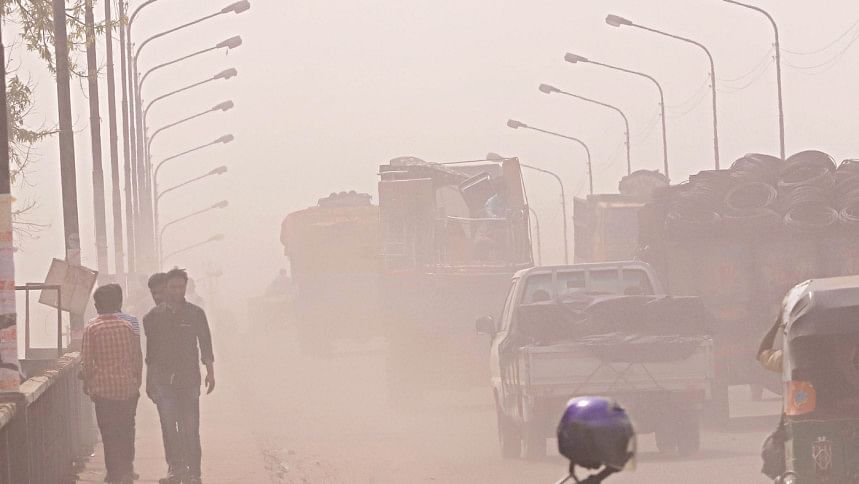
Integrated and Efficient Transport Infrastructures for Urban Areas
It is perceived that better transport infrastructure in urban areas can help to combat traffic jams in urban areas. However, it has been observed in many cases that investment in transport infrastructures alone cannot solve traffic problems in the city. Rather cities should concentrate on traffic management, road governance, travel demand management, and better integration of land use-transport relationships to ensure efficient and affordable transport systems in urban areas. An efficient urban transport plan generally prioritizes pedestrian-friendly facilities, roadway development, improvement of bus services and bus route franchising, and development of Bus Rapid Transit (BRT) and Mass Rapid Transit (MRT).
However, in the case of Dhaka city, in the different phases of the Strategic Transport Plan (STP, 2005) implementation, appropriate attention and importance on low investment priorities like pedestrian-friendly facilities, improvement of bus services, and bus route franchising were not given due importance by the successive governments. Rather, high investment projects - which were not preferred in STP - like expressways, flyovers, and Metro Rails, have been prioritized by the authorities for traffic solutions in the capital.
Over the years, unnecessary flyovers have been constructed in various levels of urban areas across Bangladesh without detailed transport and planning impact assessment. For example, flyovers of Chittagong City have been constructed without a detailed feasibility study. Ultimately traffic chaos could not be resolved in Port City, even after huge investments in infrastructure. Urban authorities should devise comprehensive plans to integrate transport-land use relationships effectively. This includes the implementation of intra-city bus and paratransit services, alongside the development of pedestrian-friendly footpaths throughout all urban areas in Bangladesh.
Light Rail Transit (LRT) and Commuter Rail services could be very beneficial to increasing the connectivity of big cities with their surrounding regions. LRT could be a better option in many cases than Mass Rapid Transit (MRT) due to its financial viability. As metro rail is usually a subsidized project - for developing countries like Bangladesh - any plan for MRT network development should be judiciously planned and designed for reaping maximum socio-economic benefits and lessening economic burden and debt for the country as well.
Speedy rail connectivity among different regions in Bangladesh should receive priority to promote balanced urban and spatial development of Bangladesh. Rail link to Cox's Bazar has been a new introduction, though, there are some criticisms regarding environmental issues relating to the protection of three Conservation areas along this route. Regional decentralization can be functional and effective if we could connect our divisional and regional centers with Dhaka by speedy rail network.
IPD research in 2023 reveals that there is a shortage of 795 playgrounds in Dhaka, the densely populated capital, while Chattogram lacks 541, to meet the urban planning standard.Moreover, number of playground shortages is 37 in Rajshahi, 65 in Khulna, 40 in Sylhet, and 45 in Barisal, according to this study.
A Way Forward toward Balanced Urban Development in Bangladesh
Bangladesh highly demands planned, balanced, and sustainable development of its urban areas for its sustained growth. Comprehensive urban and spatial planning is necessary to achieve this goal. Development authorities like RAJUK, CDA, RDA, and KDA have been planning Structure Plan, Master Plan, and Detail Area Plan (DAP) for divisional level cities for many years. However, the implementation rate of these physical plans is very low. Master plans prepared long ago by LGED have not been gazetted by the government yet. Therefore, our secondary towns are growing in an unplanned manner, having detrimental effects on people and the environment. On top of that, even 50 years after independence, we do not have a National Physical Plan for Bangladesh to guide its urban and spatial development. Recently, Bangladesh Institute of Planners (BIP) has formulated a 'Spatial Planning Framework' for Bangladesh to ensure proper planning practices in Bangladesh in a coordinated way. The government should take appropriate steps in this regard to ensure that urbanization and spatial development around urban centers follow this framework to ensure the planned and sustainable development of Bangladesh. We need comprehensive urban planning of all levels of our urban areas and their appropriate implementation so that further damage to urban areas is not done - lest it is too late to respond.

 For all latest news, follow The Daily Star's Google News channel.
For all latest news, follow The Daily Star's Google News channel. 


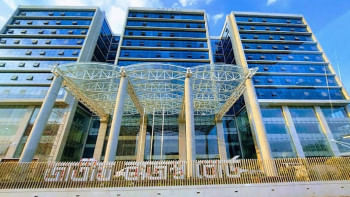
Comments